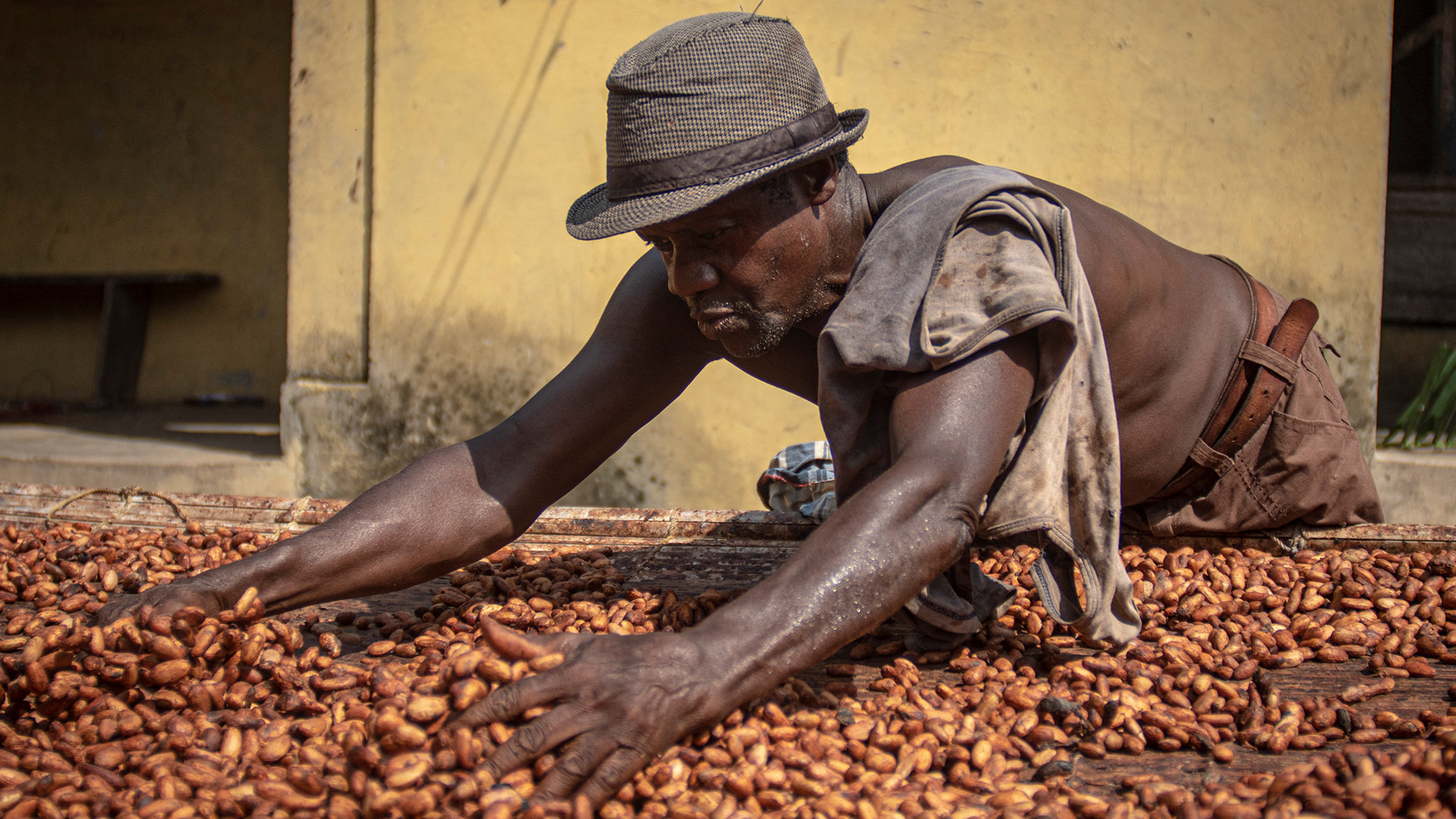
Steve Wateridge: The cocoa market has been very quiet for a long period of time, but underneath the surface, there have been issues developing in the two largest producing countries, Ivory Coast and Ghana, which between them, account for 65 or 70% of world production. They’re both suffering from an aging tree stock, and they also have disease issues. There’s a disease called cocoa swollen shoot virus that spreads very slowly, but if it’s not controlled, it does eventually kill trees and it spreads further. And you know, in the last 12 months, I think there’s been a realization that we’ve reached a tipping point.
I’m Steve Wateridge, I’ve been involved in cocoa for 40 years.
We’ve gone from $12,000 to $9,000 which is, you know, huge move in in two or three days. But this time last year, we were at $2,900 so we’re still three times the price level of a year ago. And even at the end of December, we were at $4,200 so we more than double that price. So although prices have come off very sharply in a couple of days. They are still very, very high.
The current prices haven’t been passed on to consumers yet. So it’s really probably not until the back end of the year, Halloween, Thanksgiving, Christmas, that we start seeing further price increases in chocolate confectionery. In the meantime, I suspect what will happen is that the industry will try to use as little cocoa in their products as possible. They will look for other ingredients. If they can put fruit and nuts in a bar and market that rather than a solid chocolate bar, it uses less cocoa. So there are ways of trying to use less cocoa and trying to absorb some of the price increase, but this sort of price increase ultimately has to be passed on to consumers. One of the problems we have at the moment is that consumers haven’t received the full effect of the price rises, but neither are farmers in Ivory Coast and Ghana. The farm price is set at the beginning of October, at the start of the year. They sell forward now it was increased by 50% for the mid crop in April, a month ago. But that still only took the farmer price up to $2,500 whereas in places like Cameroon, Nigeria, where there’s a free market, the farmers receiving $7,500 so the biggest producers who need to restructure their cocoa production, they’re not receiving yet the benefits of the high prices.
It’s a shame they didn’t care about it a bit more five years ago, when something could have been done and should have been done to address what are long term structural issues, but that’s the way of the world.
We’ve been monitoring the spread of swollen shoot in Ivory Coast and Ghana for 15 years or more. Eventually swollen shoot will kill the trees in the next two or three years, so they’re not going to recover until they’re dug up and replanted, and that takes time. When you do that, it takes three to five years before, three years before trees start producing, and five years before they reach maturity. So it’s a long term issue. In the short term, we need to incentivize better farm care around the world, which is what we’re doing outside of Ivory Coast and Ghana.
The standards of farm care in West Africa are really quite low. It’s a peasant agriculture. So encouraging farmers to improve farmer practices by pruning, spraying against disease and fertilizing, most important, you can improve yields quite significantly. Now that won’t change the downward trend in production, but it will shift it up to a higher level.
High prices will cure high prices eventually, but it doesn’t send it back to where it started. We need to sustain a supply demand balance. We need to reward farmers better.
We need some pretty significant demand destruction to bring the market back into balance. And the longer that takes, then, you know, the higher prices will have to go to bring about that decline in in sales volumes. It’s difficult to believe that we can turn this around simply on the supply side, in the short term, we do need, basically, people to eat less cocoa.






